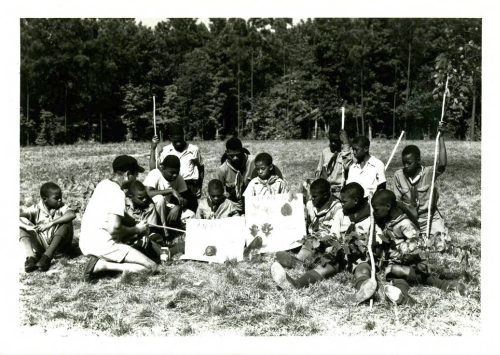Author: Fay Mitchell

William B. Umstead State Park in Raleigh was two segregated parks from 1950 to 1964: the Crabtree Creek State Park for whites and the Reedy Creek State Park for blacks. Things are very different today.
The State of North Carolina purchased the 5,000-acre Crabtree Recreation Area from the federal government in 1943 for one dollar. In 1950, a 1,000-acre portion was set aside to form Reedy Creek State Park for African Americans. The two became the William B. Umstead State Park in 1966, and today two entrances remain – the Crabtree entrance on Glenwood Avenue in Raleigh and the Reedy Creek entrance on Harrison Avenue in Cary. Both areas are open to all members of the public.

Jones Lake was the first state park established for blacks in 1939 under a lease agreement with the federal government. The land was given to the state in 1954. The park was tremendously popular from the onset and with the passage of the Civil Rights Act of 1964, the park and all parks were opened to all people.
The North Carolina Teachers Association, an organization of black educators, donated land to the state that became Hammocks Beach State Park in 1961. New York neurosurgeon William Sharp gave the land near Swansboro to the group in 1950, at the suggestion of his longtime hunting guide and caretaker, John Hurst.
The NCTA enjoyed recreational use but was unable to develop the 892-acre property commercially so gave it to the state. The Hurst family sold an additional 290 acres on the mainland to the state in 2014.

These three parks have the richest African American history among the 41 state parks and recreation areas. More recently, Howard Lee added to that history when in 1977 he was appointed the first African American secretary of the N.C. Department of Natural Resources and Community Development, which included the Division of State Parks. Later that year, Lee proposed the creation of the Mountains-to-Sea Trail, that he said, “could draw people together and help us know a little more about ourselves and help us understand our neighbors a little better.”
Today the Mountains-to-Sea State Trail is planned to extend for 1,400 miles from Great Smoky Mountains National Park to Jockeys Ridge State Park on the coast. Approximately 670 miles of the trail are complete, passing through mountain vistas, picturesque farms, textile mills, small towns, and other unique North Carolina settings. It is one of six State Trails in North Carolina.

The Division of Parks and Recreation is housed in the N.C. Department of Natural and Cultural Resources today. In 2018, Dwayne Patterson was named the first African American director of the division. He oversees management of the more than 234,000 acres of parks, recreation areas and trails, and pledges, “We are committed to our mission of conserving natural resources, educating our visitors, and providing quality outdoor recreation for all.”

